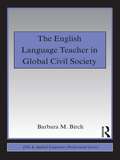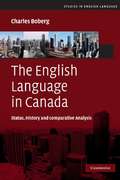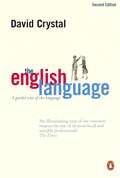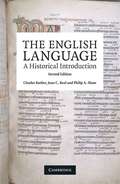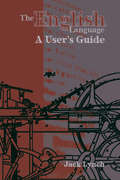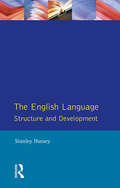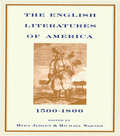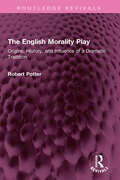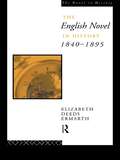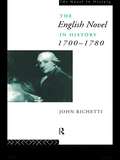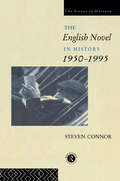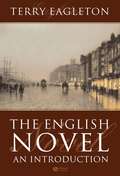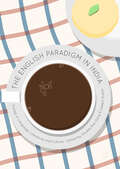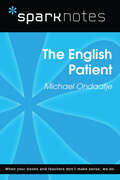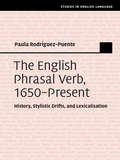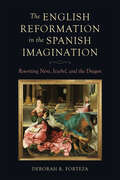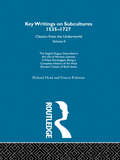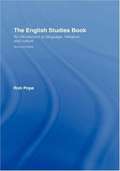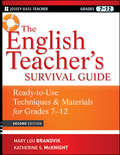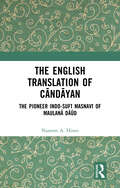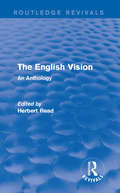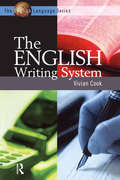- Table View
- List View
The English Language Teacher in Global Civil Society (ESL & Applied Linguistics Professional Series)
by Barbara M. BirchHow can English language teachers contribute to peace locally and globally? English language teachers and learners are located in the global civil society – an international network of civil organizations and NGOs related to human rights, the environment, and sustainable peace. English, with its special role as an international language, is a major tool for communication within this network. On the local level, many teachers are interested in promoting reconciliation and sustainable peace, but often do not know how to do so. This book provides information, analysis, and techniques to help teachers around the world take action toward this goal. Balancing, in a readable and accessible way, the global and the local, core and periphery, cultural diffusion and resistance, theory and practice, pessimism and optimism, outsider and insider perspectives, the expert role and the apprentice role, and prescriptive and elicitive methods, it offers an alternative to literature about critical applied linguistics, globalization, and peace education that is simply too complex and wordy to spread easily from theoretician to the classroom teacher. The English Teacher in Global Civil Society: synthesizes threads from many fields and topics into a coherent and empowering argument for the activist role English language teachers can take to promote social change draws on humanistic education, peace education, cross-cultural understanding, problem-posing, cooperative learning, and critical thinking methodologies to help English language teachers learn how to teach conflict resolution skills in their classrooms covers issues in critical applied linguistics, approaches and methodologies in ESL/EFL, global and local curricular issues, and specific skill areas such reading, writing, and speaking suggests a new goal for English language teachers: global citizenship. This engaging, informative, provocative, and highly readable book is a welcome resource for English language teacher trainers, pre-service teachers, practicing classroom teachers, and Peace Corps workers around the world.
The English Language in Canada
by Charles BobergThe English Language in Canada examines the current status, history and principal features of Canadian English, focusing on the 'standard' variety heard across the country today. The discussion of the status of Canadian English considers the number and distribution of its speakers, its relation to French and other Canadian languages and to American English, its status as the expressive medium of English Canadian culture and its treatment in previous research. The review of its history concentrates on the historical roots and patterns of English-speaking settlement that established Canadian English and influenced its character in each region of Canada. The analysis of its principal features compares the vocabulary, pronunciation and grammar of Canadian English to standard British and American English. Subsequent chapters examine variation and change in the vocabulary and pronunciation of Canadian English, while a final chapter briefly considers the future of Canadian English.
The English Language: A Guided Tour of the Language
by David CrystalThis is the definitive survey of the English language - in all its forms. Crystal writes accessibly about the structure of the language, the uses of English throughout the world and finally he gives a brief history of English. The book has been fully revised and there is a fascinating new chapter on 'The effect of technology' on the English language. 'Illuminating guided tour of our common treasure by one of its most lucid and sensible professionals' The Times 'A splendid blend of erudition and entertainment' THES
The English Language: A Historical Introduction
by Charles Barber Joan C. Beal Philip A. ShawWhere does today's English come from? This new edition of the bestseller by Charles Barber tells the story of the language from its remote ancestry to the present day. In response to demand from readers, a brand new chapter on late modern English has been added for this edition. Using dozens of familiar texts, including the English of King Alfred, Chaucer, Shakespeare, and Addison, the book tells you everything you need to know about the English language, where it came from and where it's going to. This edition adds new material on English as a global language and explains the differences between the main varieties of English around the world. Clear explanations of linguistic ideas and terms make it the ideal introduction for students on courses in English language and linguistics, and for all readers fascinated by language.
The English Language: A User's Guide
by Jack LynchUpdated and expanded from one of the most popular grammar sites on the web, this book provides a modern guide to English usage for the 21st century. With topics arranged alphabetically and written in an enjoyable and readable tone, The English Language: A User's Guide will help students and writers understand the nature of the language, explaining the 'why' of the rules as well as what constitutes good grammar and style. Going beyond the prescriptive wrong /right examples, Jack Lynch includes examples of weak/strong, good/better, disputed/preferred, and informal/formal usage.
The English Language: An Owner's Manual
by Lee Thomas Stephen TchudiThe English Language: An Owner's Manual is the first text designed to be used in general introductory courses in the English language that is reader friendly, accessible, and fun. Rather than focus on technical linguistics, the book offers a more eclectic set of topics to introduce students to various aspects of language. Its goals are to draw on the daily use of language, especially students' own language; explore the cultural significance of so called “traditional” grammar as a set of tools and terms; and give students a basic understanding of the modern linguistic view of language as a rule governed system. The focus throughout is on language analysis that students should find more relevant: that language is a system of universal qualities, that it is dynamic and always changing, and that studying it pushes us to rethink the assumptions we have about language.
The English Language: Structure and Development
by Stanley HusseyThe 'correct' use of English has been the subject of vigorous debate in recent years. But what defines 'correctness' in our use of language? And how has this altered over time? In this authoritative survey of the history of the English language, the author examines how linguistic traditions have changed and developed over the centuries to produce the language that we are familiar with today.Taking present-day usage as its starting point, the book uses a topic-based approach to explore the historical development of vocabulary, grammar, syntax, sounds and spellings, thus providing both a firm sense of the structure of the language and an outline of its history.
The English Literatures of America: 1500-1800
by Michael Warner Myra JehlenThe English Literatures of America redefines colonial American literatures, sweeping from Newfoundland and Nova Scotia to the West Indies and Guiana. The book begins with the first colonization of the Americas and stretches beyond the Revolution to the early national period. Many texts are collected here for the first time; others are recognized masterpieces of the canon--both British and American--that can now be read in their Atlantic context. By emphasizing the culture of empire and by representing a transatlantic dialogue, The English Literatures of America allows a new way to understand colonial literature both in the United States and abroad.
The English Morality Play: Origins, HIstory, and Influence of a Dramatic Tradition (Routledge Revivals)
by Robert A PotterFirst published in 1975, The English Morality Play is the extended history of the English morality play, its persistence and flourishing as a dramatic tradition. The book sheds light on the intellectual and social origins of the morality play, its relationship to the medieval Corpus Christi cycle plays, its subject, purpose, conditions of original staging, and the abstract characters of its dramatis personae. The changing tradition is revealed within Renaissance drama, in the works of Skelton and Medwall, and the Reformation plays of Lindsay, Bale and Udall, as the morality play altered under the pressure of political events, escaped from the general suppression of religious drama, and in complex ways came to influence the dramatic conceptions of Marlowe, Shakespeare and Ben Jonson. Contemporary parallels to the English morality tradition in European drama are investigated, as is the rediscovery of the texts of the plays by eighteenth- and nineteenth-century critics. In the final chapter, Dr. Potter examines the revival of the morality tradition on the twentieth-century stage and its influence on such dramatists as Bernard Shaw, T. S. Eliot, W. B. Yeats and Bertolt Brecht. This book will be of interest to students of literature and drama.
The English Noun Phrase
by Evelien KeizerEnglish has an interesting variety of noun phrases, which differ greatly in structure. Examples are 'binominal' (two-noun) phrases ('a beast of a party'); possessive constructions ('the author's opinion'); and discontinuous noun phrases ('the review [came out yesterday] of his book'). How are these different noun phrases structured? How do we produce and understand them? These questions are central to this 2007 study, which explores the interaction between the form of noun phrases, their meaning, and their use. It shows how, despite the need in linguistic analysis for strict categories, many linguistic constructions in fact defy straightforward classification - and concludes that in order to fully explain the internal structure of utterances, we must first consider the communicative, pragmatic and cognitive factors that come into play. Drawing on a range of authentic examples, this book sheds light not only on the noun phrase itself but also the nature of linguistic classification.
The English Novel In History 1840-1895 (Novel In History Ser.)
by Elizabeth ErmarthThe construction of history as a social common denominator is a powerful achievement of the nineteenth-century novel, a form dedicated to experimenting with democratic social practice as it conflicts with economic and feudal visions of social order. Through revisionary readings of familiar nineteenth-century texts The English Novel in History 1840-1895 takes a multidisciplinary approach to literary history. It highlights how narrative shifts from one construction of time to another and reformulates fundamental ideas of identity, nature and society. Elizabeth Ermarth discusses the range of novels alongside other cultural material, including painting, science, religious, political and economic theory. She explores the problems of how a society, as defined in democratic terms, can accommodate political, gender and class differences without resorting to hierarchy; and how narrowly conceived economic agendas compete with social cohesion. Students, advanced undergraduates, postgraduates and specialists will find this text invaluable.
The English Novel in History 1700-1780 (Novel In History Ser.)
by John RichettiThe English Novel in History 1700-1780 provides students with specific contexts for the early novel in response to a new understanding of eigtheenth-century Britain. It traces the social and moral representations of the period in extended readings of the major novelists, as well as evaluatiing the importance of lesser known ones. John Richetti traces the shifting subject matter of the novel, discussing: * scandalous and amatory fictions * criminal narratives of the early part of the century * the more disciplined, realistic, and didactic strain that appears in the 1740's and 1750's * novels promoting new ideas about the nature of domestic life * novels by women and how they relate to the shift of subject matter This original and useful book revises traditional literary history by considering novels from those years in the context of the transformation of Britain in the eighteenth century.
The English Novel in History, 1950 to the Present
by Steven Connor Professor Steven ConnorSteven Connor provides in-depth analyses of the novel and its relationship with its own form, with contemporary culture and with history. He incorporates an extensive and varied range of writers in his discussions such as * George Orwell * William Golding * Angela Carter * Doris Lessing * Timothy Mo * Hanif Kureishi * Marina Warner * Maggie Gee Written by a foremost scholar of contemporary culture and theory, The English Novel in History, 1950 to the Present offers not only a survey but also a historical and cultural context to British literature produced in the second half of this century.
The English Novel: An Introduction
by Terry EagletonWritten by one of the world’s leading literary theorists, this book provides a wide-ranging, accessible and humorous introduction to the English novel from Daniel Defoe to the present day. Covers the works of major authors, including Daniel Defoe, Henry Fielding, Samuel Richardson, Laurence Sterne, Walter Scott, Jane Austen, the Brontës, Charles Dickens, George Eliot, Thomas Hardy, Henry James, Joseph Conrad, Virginia Woolf, D.H. Lawrence and James Joyce. Distils the essentials of the theory of the novel. Follows the model of Eagleton’s hugely popular Literary Theory: An Introduction (Second Edition, 1996).
The English Paradigm in India
by Shweta Rao Garg Deepti GuptaThis collection pulls together a wide range of perspectives to explore the possibilities and the boundaries of the paradigm of English studies in India. It examines national identity and the legacy of colonialism through a study of comparative and multi ethnic literature, education, English language studies and the role ICT now plays in all of these fields. Contributors look at how the issue of identity can be addressed and understood through food studies, linking food, culture and identity. The volume also considers the timely and very relevant question of gender in Indian society, of the role of the woman, the family and the community in patriarchal contemporary Indian society. Through the lens of literature, culture, gender, politics, this exciting volume pulls together the threads which constitute modern Indian identity.
The English Patient (SparkNotes Literature Guide Series)
by SparkNotesThe English Patient (SparkNotes Literature Guide) by Michael Ondaatje Making the reading experience fun! Created by Harvard students for students everywhere, SparkNotes is a new breed of study guide: smarter, better, faster.Geared to what today's students need to know, SparkNotes provides:chapter-by-chapter analysis explanations of key themes, motifs, and symbols a review quiz and essay topics Lively and accessible, these guides are perfect for late-night studying and writing papers.
The English Phrasal Verb, 1650–Present: History, Stylistic Drifts, and Lexicalisation (Studies in English Language)
by Paula Rodríguez-PuenteProviding a detailed and comprehensive account of the development of phrasal verbs from early modern to present-day English, this study covers almost 400 years in the history of English, and provides both a diachronic and synchronic account based on over 12,000 examples extracted from stratified electronic corpora. The corpus analysis provides evidence of how registers can inform us about the history of English, as it traces and compares the usage and stylistic drifts of phrasal verbs across ten different genres - drama, fiction, journals, diaries, letters, medicine, news, science, sermons, and trial proceedings. The study also sheds new light on the morpho-syntactic and semantic features of phrasal verbs, proposing a new approach to the category, considering not only on their grammatical features, but also their historical development, by discussing the category in terms of a number of central mechanisms of language change.
The English Reformation in the Spanish Imagination: Rewriting Nero, Jezebel, and the Dragon (Toronto Iberic)
by Deborah R. FortezaThe English Reformation in the Spanish Imagination examines early modern Spanish literary works that represent English Catholics and figures from the English Reformation, including Henry and Elizabeth Tudor, Anne Boleyn, Catherine of Aragon, Sir Francis Drake, and Mary Stuart. Deborah R. Forteza compares these texts to assess how rhetorical and genre distinctions open and constrain the Spanish representations and how these exchanges inform Anglo-Spanish perceptions and relations. The book focuses on the literary representation of characters as classical and biblical monsters and saints and considers how these images were transformed and deployed in lesser-known poems, plays, and novels in order to capture the Spanish imagination. Through these sources, Forteza reveals the complex fraternal and antagonistic links between England and Spain, including Black Legend and Counter-Reformation exchanges. In examining the works that shaped Spain’s view of England at the time, The English Reformation in the Spanish Imagination demonstrates the importance of transnational study and why it is essential for a more nuanced understanding of Spanish literature.
The English Rogue - described in the life of Meriton Latroon a witty extravagant being a complete history of the most eminent cheats of both sexes: Previously published 1665 and 1928 (Key Writings On Subcultures, 1535-1727 Ser. #Vol. 2)
by Richard Head Francis KirkmanWhen it first appeared, The English Rogue was declared a forbidden book on account of its gross indecency. Copies were printed secretly and sold furtively at alehouses until 1665 when it was properly licensed. When requested, the author, Richard Head, declined to produce a second volume as it was his belief that the text had been interpreted as autobiographical and his reputation had suffered as a consequence. Francis Kirkman, who had acquired the rights to the work, set about the endeavour himself and wrote the remaining volumes, publishing them in 1671. This is a reprint of the 1928 reissue containing Head's original book and two of Kirkman's added volumes.
The English Studies Book: An Introduction to Language, Literature and Culture (2nd edition)
by Rob PopeThe English Studies Book is uniquely designed to support students and teachers working across the full range of language, literature and culture. Combining the functions of study guide, critical dictionary and text anthology, it has rapidly established itself as a core text on a wide variety of degree programmes nationally and internationally. Revised and updated throughout, features of the second edition include: * a new prologue addressing changes and challenges in English Studies * substantial entries on over 100 key critical and theoretical terms, from 'absence' and 'author' to 'text' and 'versification' - with new entries on 'creative writing', 'travel writing' and 'translation' * practical introductions to all the major theoretical approaches, with new sections on aesthetics, ethics, ecology and sexuality * a rich anthology of literary and related texts from Anglo-Saxon to Afro-Caribbean, with fresh selections representing the sonnet, haiku, slave narratives and science fiction, and with additional texts by Elizabeth Barrett Browning, Charles Darwin, Ian McEwan, Margaret Atwood, Amy Tan and others * handy frameworks and checklists for close reading, research, essay writing and other textual activities, including use of the Internet.
The English Teacher's Survival Guide
by Mary Lou Brandvik Katherine S. McknightProblem-solving techniques for all aspects of the English teacher's jobThis unique time-saving book is packed with tested techniques and materials to assist new and experienced English teachers with virtually every phase of their job from lesson planning to effective discipline techniques. The book includes 175 easy-to-understand strategies, lessons, checklists, and forms for effective classroom management and over 50 reproducible samples teachers can adopt immediately for planning, evaluation, or assignments. It is filled with creative and functional ideas for reading response activities, writing assignments, group and individual projects, and speeches.Offers instructions for creating and implementing an effective classroom-wide behavior management programShows how to practice the art of teaching English effectively and reduce time on labor intensive tasksReveals how to work effectively with parents, colleagues, substitute teachers, administrators, and community resourcesThe second edition includes coverage of technology in the classroom, advice for working with reluctant readers, a wealth of sample teaching units and more.
The English Translation of Cāndāyan: The Pioneer Indo-Sufī Masnavī of Maulanā Dāūd
by Naseem A. HinesThis book is the first English translation of Cāndāyan, the pioneer work in a long tradition of Indian-Sufi love narratives. The story was adapted from an oral epic Chanaini, popular in the Awadhi speaking region of north India in the fourteenth century. The early manuscripts of Cāndāyan, though composed in the Awadhi dialect, were recorded in the Persian script. Each stanza-like unit is introduced by a phrase or sentences in the Persian language style, making it necessary for a reader to know the Persian script and language, as well as the Awadhi dialect. This somewhat limits the access to fully explore Cāndāyan. In addition to this, the esoteric interpretation, which is the distinguishing feature that gives the Indian-Sufi masnavī literature its unique identity, was also not yet realized. Cāndāyan deserves to be celebrated and recognized because it marks the beginning of the indigenizing process of the masnavī in India, and served as a model for this literary genre for the next 540 years. A serious study of Maulana Daud’s Cāndāyan, composed in 1379, in the reign of Firoz Shah Tughlaq, did not begin until well into the twentieth century because only a few pages of its manuscript folios were discovered at a time, in various academic institutions and museums around the world. Cāndāyan is a fascinating study of the blending of the features of the Persian masnavī with the features of the Hindi premākhyān narratives and the features of the medieval Jain literature. Even today, annually in the Mahakoshala region Cāndāyan is presented in the form of drama and in the folk-song and play forms. Print edition not for sale in South Asia (India, Sri Lanka, Nepal, Bangladesh, Pakistan and Bhutan)
The English Verb (Longman Linguistics Library)
by F.R. PalmerA long established and highly regarded account of all aspects of the English verb taking account of recent work on tense, phase and aspect, and of the author's own research. Theoretical discussion is kept to a minimum, but the arguments are always presented within a modern theoretical framework.
The English Vision: An Anthology (Routledge Revivals: Herbert Read and Selected Works)
by Herbert ReadThis anthology, first published in 1939, aimed to present the English ideal in its various aspects as expressed by representative Englishmen. This book will be of interest to students of literature and to the general reader.
The English Writing System (The English Language Series)
by Vivian J CookEnglish is increasingly becoming the world's lingua franca. If we are not native speakers of one of the many varieties of English, then we may be students of English, or use English regularly for academic or business purposes. The English Language series, which is international in focus, aims to synthesize the wealth of existing linguistic research both on and in English. Each volume in the series is designed to present these findings in an accessible, enlightening and entertaining way not only to students of English linguistics but to learners and users of English across the globe.The English Writing System describes how writing is not simply ancillary to other aspects of language but vitally important to almost everything we do, from signing our wills to sending a text message. This book discusses the mechanics of the writing systems of English; the different ways people process words on a page and the mistakes they can make; how children and second language learners acquire these systems; the historical development of the language and the progress of writing technology: in short, the effectiveness of the writing systems of English.Combining an academic perspective from linguistics and psychology with insights into everyday spelling mistakes, The English Writing System will interest students and teachers of linguistics, literature, the English language, psychology and education.
